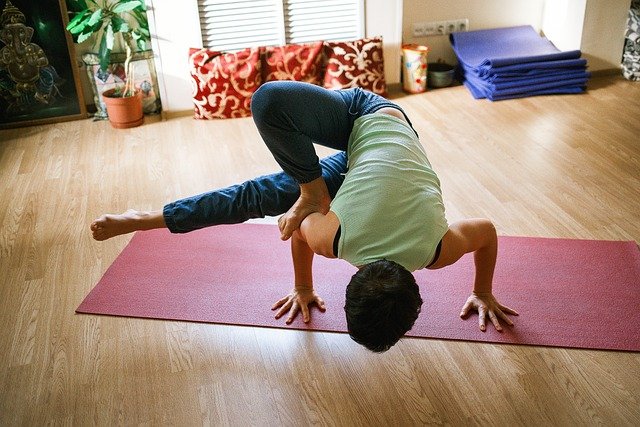Guide to Yoga Mats for Home Exercise and Fitness
A yoga mat is more than a place to stand — it’s the foundation for safe alignment, grip, and comfort during practice. Choosing the right mat affects stability in balancing poses, cushioning for joints, and how often you’ll replace it. This guide explains materials, sizing, cleaning, and practical tips for using a mat for exercise and general fitness at home.

This article is for informational purposes only and should not be considered medical advice. Please consult a qualified healthcare professional for personalized guidance and treatment.
What is a yoga mat and why it matters
A yoga mat is a portable surface designed to provide grip and cushioning during yoga and floor-based exercise. Mats vary in thickness, texture, and density; each factor influences comfort and stability. A thin mat (2–3 mm) is often preferred for balance and connection to the floor, while thicker mats (6 mm or more) offer extra knee and joint cushioning for restorative practices or fitness routines that include floor work. Consider the types of classes or movements you do most when selecting one.
How to choose a mat for exercise and balance
Selecting a mat for exercise depends on grip, thickness, and durability. Grip prevents slipping during standing or dynamic poses; textured surfaces and certain materials provide better traction, especially when you sweat. Durability matters if you use the mat frequently—denser mats resist impressions and last longer. Size is also practical: standard mats are about 24 inches wide and 68 inches long, but taller practitioners may want long or wide options. Think about portability versus performance: travel mats are thin and light but offer less cushioning.
Materials and sustainability in mat design
Common mat materials include PVC, natural rubber, TPE, and cork. PVC mats are durable and high-performing for grip but are less eco-friendly; natural rubber and cork are renewable and biodegradable options that appeal to those prioritizing sustainability. TPE offers a compromise with lower environmental impact than PVC and lighter weight than natural rubber. If sustainability is important, check product materials, manufacturing practices, and end-of-life options like recycling or take-back programs.
Using a mat for home fitness routines
At home, a yoga mat is useful beyond yoga—floor-based core work, stretching, mobility drills, and low-impact strength moves benefit from a stable surface. Place the mat on a non-slip floor and avoid rugs that bunch. For mixed fitness routines, a medium-thickness mat (4–6 mm) often balances cushioning and stability. If you combine jumping or high-impact cardio with yoga, consider a layered approach: a thin yoga mat over a thicker exercise mat, or choose a mat specifically rated for multi-purpose fitness.
Care and maintenance of your yoga mat
Regular cleaning extends a mat’s life and maintains hygiene. For light cleaning, wipe with a damp cloth and mild soap after use; for deeper cleaning, follow manufacturer instructions—some mats are machine-washable, many are not. Avoid harsh chemicals, which can break down materials and reduce grip. Allow mats to air-dry flat or hung away from direct sunlight to prevent warping. Rotate the mat periodically to avoid uneven wear, and replace it when the surface starts to flake, smell persistently, or loses grip.
Pricing and product comparison for common mats
Real-world prices vary by material, brand, and features such as alignment markings or extra-long sizes. Below is a comparison of widely known mats to give a sense of typical options and cost ranges; these are estimates and meant for orientation rather than definitive pricing.
| Product/Service Name | Provider | Key Features | Cost Estimation |
|---|---|---|---|
| PRO Series | Manduka | Dense cushioning, lifetime warranty, durable PVC | $120–$150 |
| Original Mat | Liforme | Alignment guides, excellent grip, eco-friendly rubber | $140–$170 |
| Harmony Mat | Jade Yoga | Natural rubber, good grip, made in USA | $70–$120 |
| Essentials Mat | Gaiam | Lightweight, PVC or foam options, budget-friendly | $20–$40 |
| Warrior Mat | Alo Yoga | Medium thickness, textured surface, stylish designs | $60–$90 |
Prices, rates, or cost estimates mentioned in this article are based on the latest available information but may change over time. Independent research is advised before making financial decisions.
Conclusion
Choosing the right yoga mat for home practice and fitness depends on your priorities: grip, cushioning, portability, and environmental impact. Assess how you use the mat, test feel and traction when possible, and maintain it with regular cleaning and rotation. With the right mat, your exercise routine can feel more stable, comfortable, and consistent over time.






